As the summer of 2020 ended, so did the construction on many new school buildings. In a typical year, teachers and administrators would have been eagerly awaiting the first day of school and the sight of their students filling the halls of their new building for the first time. But amidst a pandemic, schools had to reevaluate their learning format for the 2020-2021 school year.
Many schools have adapted hybrid learning environments to allow for social distancing and the safety of both students and teachers. This has allowed them to put their new adaptable learning spaces to the test as they rearranged furniture and took advantage of the flexible 21st century learning environment to make the spaces conducive to social distancing measures. Other schools have chosen to begin the school year remotely with teachers facilitating their classes from empty classrooms as their students tune in and engage from home.
No matter what plan the district chose, these new schools’ flexible and student-centered features have helped educators make necessary changes as they teach through a pandemic.
POWERS ELEMENTARY SCHOOL, AMHERST EXEMPTED VILLAGE SCHOOLS
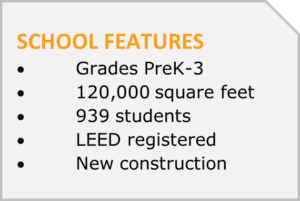 This new building replaced the District’s two aging elementary schools and is located adjacent to the existing Junior High to create a learning campus. Bright and colorful metal panels clad the exterior of the building to reflect a fun, youthful learning space.
This new building replaced the District’s two aging elementary schools and is located adjacent to the existing Junior High to create a learning campus. Bright and colorful metal panels clad the exterior of the building to reflect a fun, youthful learning space.
The classrooms for each grade level are organized around a collaborative learning area. Each classroom has a garage door that opens into the collaborative area and movable partitions between neighboring classrooms. This gives teachers the option to team teach or provide more space for individual learning. Each collaboration area has a unique color scheme with interactive technology and monitors on movable carts and includes hard and soft flexible seating options.
One of the “return-to-school” challenges of the pandemic was to ensure appropriate distancing between students. The collaborative learning areas have fortuitously provided not only more space for instruction, but also for circulation routes in and out of the grade level configurations.
Both inside and out, this new building is a place where children can thrive educationally and socially.
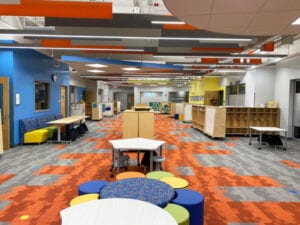


HUDSON MIDDLE SCHOOL, HUDSON CITY SCHOOLS
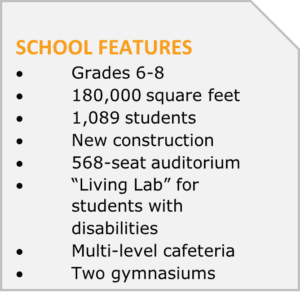 The new Hudson Middle School is situated adjacent to the historical district and embodies the Western Reserve style of architecture indicative of the City of Hudson. The new facility opened for classes in a hybrid learning environment (½ in person, ½ remote with a mid-week switch of students) for the 2020-2021 school year and then returned to a full in school model.
The new Hudson Middle School is situated adjacent to the historical district and embodies the Western Reserve style of architecture indicative of the City of Hudson. The new facility opened for classes in a hybrid learning environment (½ in person, ½ remote with a mid-week switch of students) for the 2020-2021 school year and then returned to a full in school model.
The interior features student-centered learning concepts with classrooms opening via garage doors to extended learning areas where state-of-the-art technology and versatile furniture allow for various styles of teaching and learning. The school’s media center includes both instructional and makerspace areas.
A challenge of returning to school during the pandemic was to ensure appropriate social distancing. The extended learning areas have, by design, provided not only more space for instruction but also for one-way circulation routes in and out of the grade level configurations. Teachers have configured mobile locker cubbies to add definition to the space as they extend into the extended learning areas.
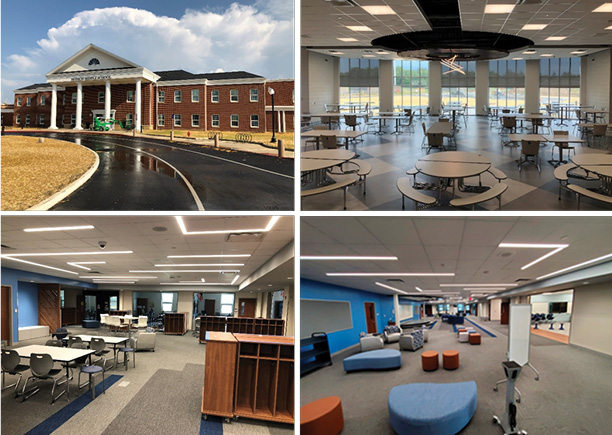
BROOK PARK ELEMENTARY SCHOOL, BEREA SCHOOL DISTRICT
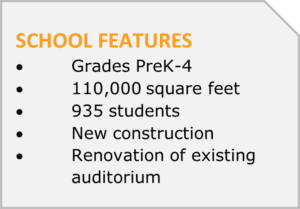 The new Brook Park Elementary resides where one of the District’s former middle school once was located, with only the original auditorium remaining. While early plans for reopening in the 2020-21 school year have changed from remote to hybrid (2 days a week in-person for students with the remainder of the week remote learning), the building’s flexibility in design provides an agile environment in dealing with all types of learning models.
The new Brook Park Elementary resides where one of the District’s former middle school once was located, with only the original auditorium remaining. While early plans for reopening in the 2020-21 school year have changed from remote to hybrid (2 days a week in-person for students with the remainder of the week remote learning), the building’s flexibility in design provides an agile environment in dealing with all types of learning models.
The new school design encompasses student-centered future-ready learning with flexible learning spaces, collaborative learning communities, and breakout areas incorporated throughout the building. Unique to this school, there is no dedicated student dining area, as the collaborative learning areas also double as eating spaces. The design of these areas is prescient for these times of pandemic, as they not only enable students to eat with their cohorts, but they also provide more space for instruction, meeting the need for more personal space for each student. The dedication of as much space as possible in the building for educational purposes also means that the use of the collaborative learning spaces additionally provides appropriately-distanced, one-way circulation routes in and out of the grade level configurations.

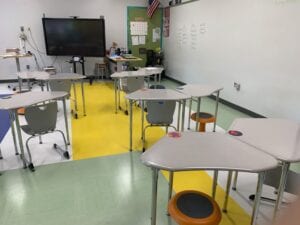
BEREA-MIDPARK HIGH SCHOOL
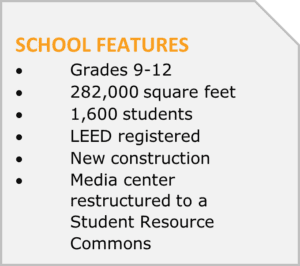 The new 1,600-student High School is adjacent to the Baldwin-Wallace University and blends architecturally with its surroundings, forming an important educational corridor in the City of Berea.
The new 1,600-student High School is adjacent to the Baldwin-Wallace University and blends architecturally with its surroundings, forming an important educational corridor in the City of Berea.
On the interior, the school incorporates Future Ready Learning principles, providing students with significant educational opportunities to prepare them for their future. Maximum flexibility is inherent in the design of learning spaces (formerly thought of as classrooms) with mobile technology, casework, and furniture. Operable partitions between classrooms and adjacent collaboration spaces enhances teaching and learning.
Recognizing a need to maximize square footage for educational purposes, the decision was made to eliminate spaces typically used for only a few hours a day. Replacing traditional student dining with cafes strategically located throughout the building, and contiguous to the collaborative learning areas, not only emulates the college atmosphere but also provides students with opportunities for flexible schedules and more square footage for collaboration. The collaborative learning areas have also fulfilled the need to provide more space per student during the pandemic, and the cafes have provided student dining spaces for small groups of students.
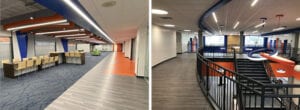
While opening a school in the middle of a pandemic has many challenges, these new buildings have enabled teachers to make the necessary adjustments for the safety and education of their students and will continue to support the communities in which they stand for many years to come.
